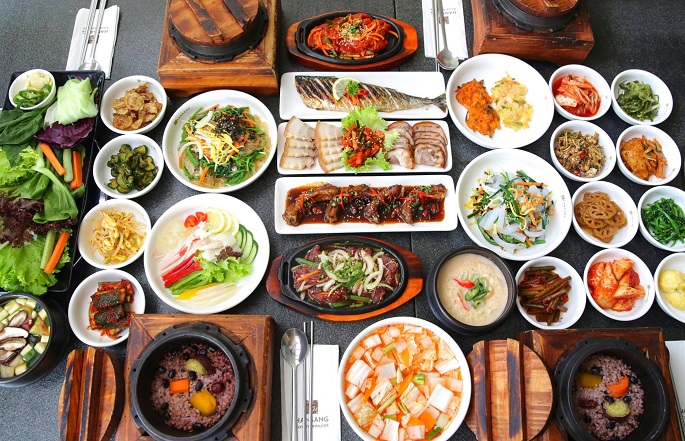Cinemas in the country get to show movies featuring one or two South Korean stars along with popular Chinese celebrities.
Radio stations, on the other hand, get to play catchy Korean songs in between Mandopop tunes.
On the gastronomic side, a bowl of hot samgyetang or slices of the fattening samgyeopsal can appease a growling Chinese tummy.
Koreans have indeed successfully established their presence in China, and when it comes to tickling the taste buds of the Chinese, they actually put up restaurants here to carry out the task.
Samgyetang (ginseng chicken soup) and samgyeopsal (grilled pork belly) are only but two popular Korean fares one can taste in Beijing.
Though experiencing authentic Korean fare by going to South Korea may prove to be an entirely different kind of adventure, a Korean restaurant just across the street may also offer pleasant surprises.
Those craving for Korean food can head “north” first.
One may find it daunting to visit North Korea but using chopsticks to experience, say, the “delicious” side of the Hermit Kingdom may be far more appealing.
Time Out Beijing recommends Silver Bank in Chaoyang District for “excellent” kimchi (fermented veggie side dish) and tteokbokki (soft rice cake with sweet gochujang, a kind of red chili sauce).
For the “adventurous eater” said Time Out Beijing, Haedanghwa in Chaoyang District’s Kuntai Mansions serves dog meat.
Now for some food for the “Seoul,” one can head to Beijing’s Koreatown, Wangjing (“view of Beijing”).
According to CRIEnglish, it is the “home of Beijing’s best Korean food.”
Diners can order gogigui (Korean barbecue) at Tan Tan Da Lu (Tan Tan Big Stove). They can as well feast on bulgogi (grilled marinated beef) and galbi or kalbi (grilled pork or beef short ribs marinated in ganjang, soy sauce made from fermented soybeans).
For those who don’t want marinated meat, they can grill chadolbegi (beef brisket). Reminder: these briskets are sliced thinly, so they tend to cook fast. Be careful not to burn them.
Tan Tan Da Lu also offers a variety of banchan (side dishes).
Some banchan include gaji namul (boiled eggplant), japchae (stir-fried glass noodles), myulchi bokkeum (stir-fried dried anchovies), nakji bokkeum (stir-fried baby octopus) and sukjunamul (marinated mung bean sprouts).
Customers at Huo Lu Huo can treat themselves with snow flower beef. The meat comes from Wagyu cattle; therefore, they can expect the beef to be juicy and tender.
Meogja! (Let’s eat!).




























